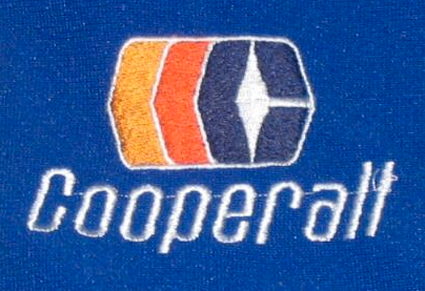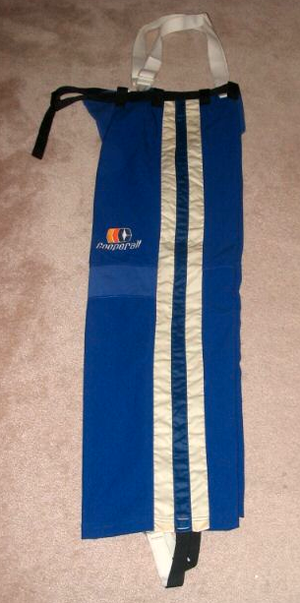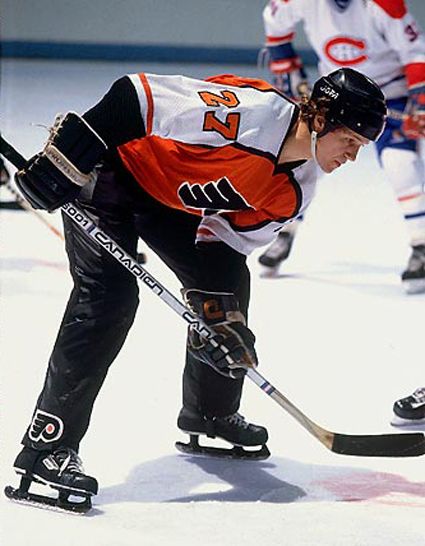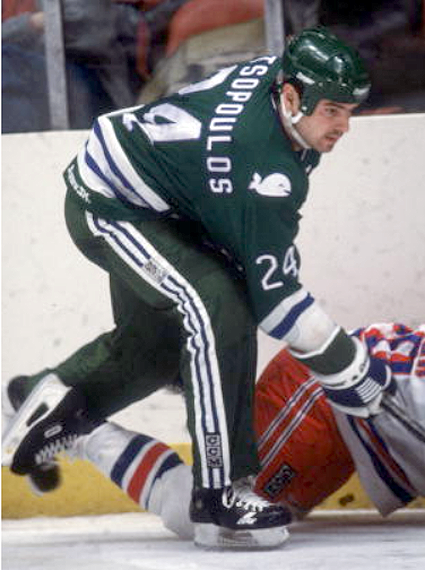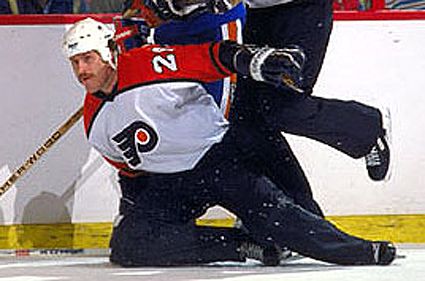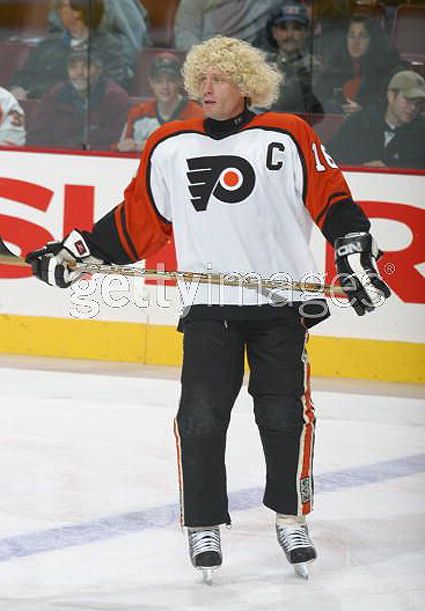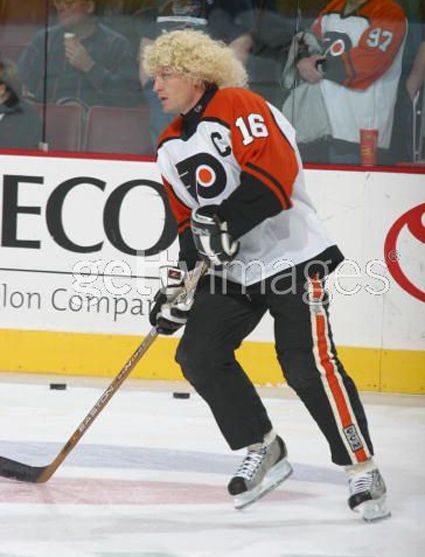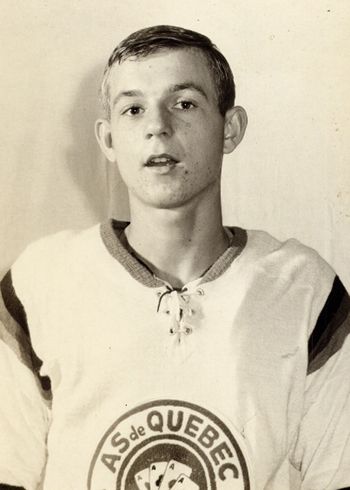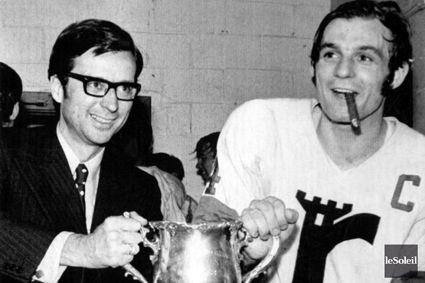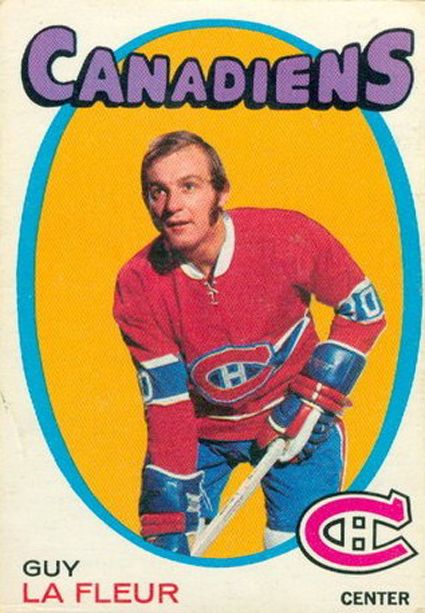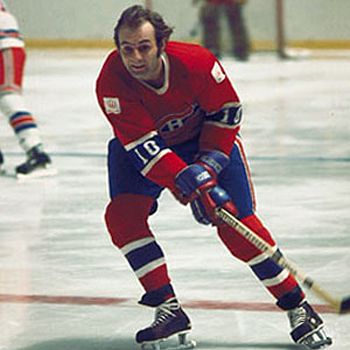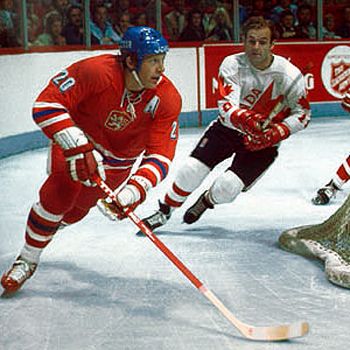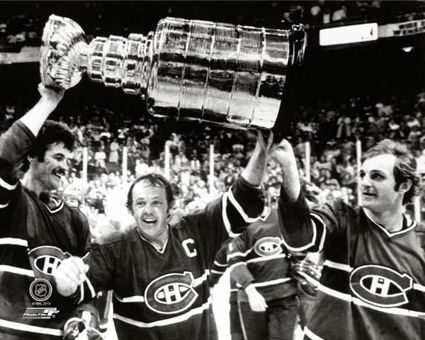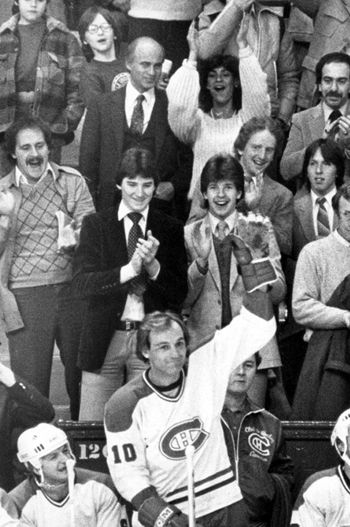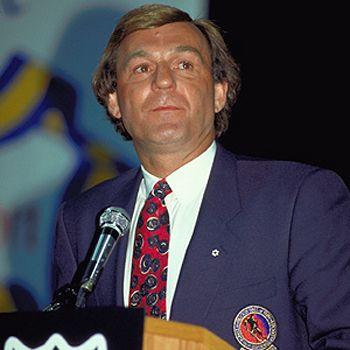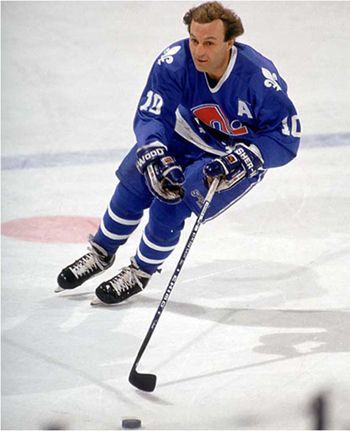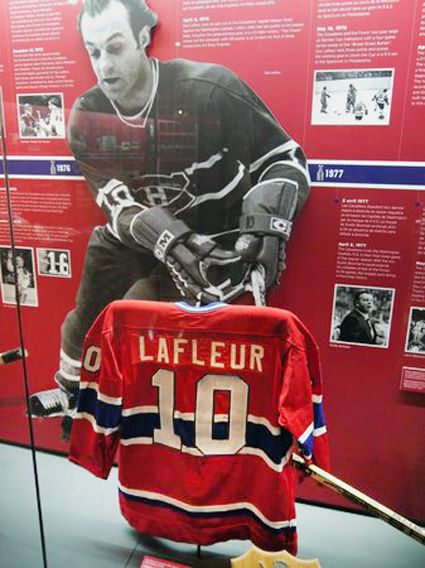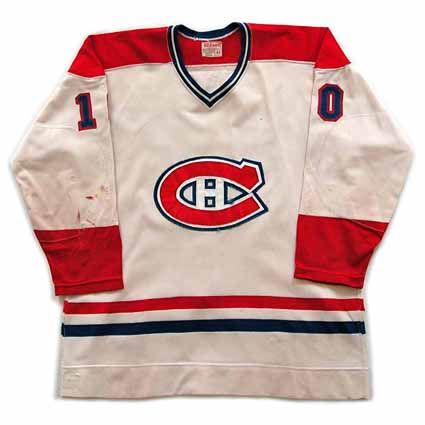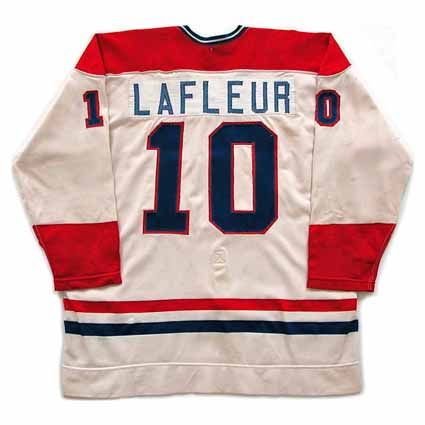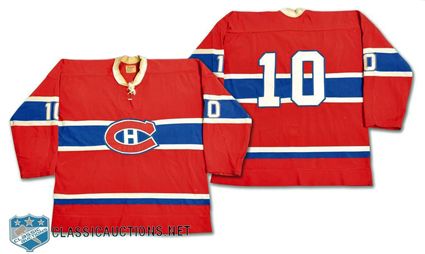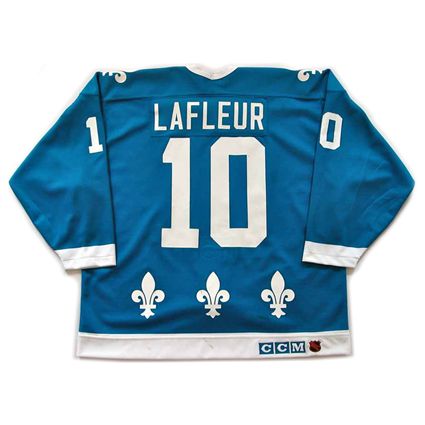Wednesday, April 24, 2024
Hall of Famer Al Shaver
Al Shaver was the voice of Minnesota North Stars hockey. Always was. Always will be.
He was a graduate of the Lorne Green Academy of Radio and Television Art in Toronto in 1948 and worked the morning show and baseball play-by-play at CJOY in Guelph, Ontario. He then worked in Calgary and Medicine Hat, Alberta before taking a job in Edmonton in 1952, where he did play-by-play for the Edmonton Eskimos of the Canadian Football League. He also broadcast five Grey Cup championship games nationally on the CBC.
During the 1960's he worked in both Montreal and Toronto, which included doing junior hockey games and hosting a bowling show, until 1967 when the National Hockey League made it's dramatic expansion from six teams to twelve.
Shaver was hired as the voice of the North Stars for their inaugural season and was with the team first on WCCO until 1978.
He moved with the team to KSTP until the franchise relocated to Dallas in 1993 for a total of all 26 seasons of the North Stars, calling 2,062 out of 2,071 games.
"It was a 26-year love affair that began on an October night in St. Louis, 1967, and ended abruptly on an April evening in 1993 when my love left me and moved to Dallas," Shaver wrote in 2007 .
In addition to working for the North Stars, KSTP also had Shaver work on the Minnesota State High School Hockey Tournament, which gave him the opportunity to meet legendary Broadcaster Howard Cosell, who commented "What are you doing here?" as Cosell was of the opinion that Shaver should be in New York working for a national network.
Howard Cosell with Al Shaver
He was such a part of the fabric of the North Stars that he was featured on both the team's media guide and made more than one appearance on the cover of the team's program.
Not quite ready to close out his broadcasting career, he then worked for the University of Minnesota Golden Gophers until he retired on his own terms in 1996.
Shaver was a ten-time Minnesota Sportscaster of the Year and was inducted into the Museum of Broadcasting Hall of Fame in 2003. He was also given the 1993 Foster Hewitt Memorial Award by the Hockey Hall of Fame for outstanding contributions to radio and TV broadcasting and the game of hockey.
In addition to those honors, the press box at the Xcel Energy Center, home of the Minnesota Wild, is named for him.
On a personal note, as a youngster, we would listen to Shaver call North Stars games against the Chicago Black Hawks at night with our transistor radio tuned to WCCO. We recall Shaver always saying "a shot from the blue line hits traffic in front", leading us to mistakenly believe "Traffic" was the name of a Chicago defenseman and the greatest shot blocker in hockey history!
Upon getting the opportunity to share that story with Shaver, he related that when goaltender Cesare Maniago would make a great save, he'd call out "Oh! Maniago makes a great save!" causing some to believe that the Canadian born "O'Maniago" was actually of Irish decent!
For a real treat, to hear Al at his best, including a call of "a shot hitting Traffic" and an "O'Maniago" as well as him excitedly calling a fight all in the same sequence, click below to listen.
On the occasion of the final North Stars home game in 1993, we felt bad that Shaver was being overlooked on what would be his last time calling a North Stars game in Minnesota amidst all the vitriol for the North Stars owner who was moving the club. In an effort to pay tribute to the man who had called the North Stars games since day one, we made a simple sign in his honor. With the game against Chicago (who it turns out never employed a defenseman named "Traffic" we had learned by then) beginning to wind down, and us not having had a chance to display our sign, the North Stars obliged by finally scoring their first goal of the game with less than 6 minutes remaining.
The in-arena presentation was for the video of the goal to be replayed on the Met Center scoreboard along with Shaver's call of the goal. Perfect! The fans in the arena had just heard Shaver's voice for the first time all night and the time was right to display the sign. Unlike modern arenas where the corridor is outside of the seating bowl, the Met Center had a walkway inside the seating bowl which separated the lower bowl from the upper level sections, giving us the opportunity to not just hold up our sign, but to walk an entire lap inside the arena with our sign held high for all fans to see.
So off we went on our tribute lap to Shaver, not knowing what to expect. Fans who saw the sign began to stand and applaud, hold their glasses up high as well as reach down from the upper seats to "high five" the sign. Roughly a quarter of the way around the arena, we realized that a camera had been trained on us and the sign was now filling the video replay screen for all to see, especially the fans lower down who may not have had a chance to see the sign until then. It didn't end there either, as one of Shaver's sons asked for the sign once we were done with it, a request we were only too happy to oblige.
Not only was there a video camera trained on the sign during the "lap of honor", but a still camera as well, resulting in a sizable photo which appeared in the Minneapolis StarTribune two days later!
Shaver currently lives in the Vancouver area enjoying his retirement while his son Wally Shaver has done the broadcasting for the North Stars, Minnesota Moose and Golden Gophers for years now and his grandson Jason Shaver currently does play-by-play for the Chicago Wolves of the AHL, carrying on the family legacy.
Here is some footage of Al Shaver calling games for the North Stars. "What a ham this turkey is!"
For another large dose of Shaver's work, here is a thirty minute program recalling the 25 year history of the North Stars, narrated by Shaver and his rich baritone, courtesy of VintageMinnesotaHockey.com.
Labels:
Minnesota North Stars,
Shaver Al
Thursday, November 24, 2022
1973-74 Toronto Maple Leafs Börje Salming Jersey
Swedish defenseman Börje Salming passed away earlier today after being diagnosed with ALS in July.
Born in 1951, Salming began his career with three seasons with Kiruna AIF in the Swedish second division beginning with the 1967-68 season. While with Kiruna, Salming played for Sweden during both the 1968 and 1969 European Junior Championships.
He joined Brynäs IF in Division 1 for three seasons beginning in 1970-71 and found immediate success with championships in both 1971 and 1972. During this phase of his career he made his senior level debut for Sweden at the 1972 World Championships, earning a bronze medal. He returned to the squad in 1973 where his offensive game exploded with 4 goals and 6 assists for 10 points in 10 games from the blueline as Sweden came through with silver medals.
Salming's eyes were opened when he was chosen to play for Sweden in a pair of exhibition games against Team Canada, who were on their way to play the second half of the 1972 Summit Series in Moscow. The Canadians played a much rougher style of hockey, with more body checking and stickwork, but Salming realized he could compete with the NHL's best.
During this time period, the world of professional hockey in North America underwent an unprecedented expansion with the arrival of the World Hockey Association in 1972, which began with a dozen new teams all needing to fill their rosters while the NHL countered with adding the New York Islanders and Atlanta Flames to attempt to secure strategic territories before the WHA could arrive. With so many players needed to fill the roughly 280 roster spots, teams began to look beyond the borders of Canada and the United States, and the Toronto Maple Leafs turned an eye toward Sweden, with an eye on left winger Inge Hammarstrom. Salming stood out to the Toronto scouts and he too, was signed as a free agent by the Maple Leafs to make his NHL debut with the 1973-74 season.
His first game came on October 10, 1973, a 7-4 victory over the Buffalo Sabres after which Salming was named the game's number one star. With minimal offensive numbers on his resume from Sweden, the rookie impressed with 34 assists on his way to a 39 point season as he unleashed his powerful wrist shot and accurate passes upon the NHL while enduring taunts of "Chicken Swede" and a barrage of physical abuse aimed at intimidating him all the way back to Sweden.
Two seasons later in 1975-76, he elevated his game to 16 goals and 41 assists for 57 points, all while playing his customary stout defense as he changed the accepted preconceived stereotype of European players being "soft" and easy to intimidate.
Prior to the start of the 1976-77 season, Salming returned to the Sweden National Team when he was a member of their roster during the inaugural 1976 Canada Cup tournament where he scored 4 goals and 7 points in 5 games.
Beginning with the 1976-77 season when he set career highs with 66 assists and 78 points, Salming reeled off four consecutive 70 point seasons, including finishing second on the team in points with 71 in 1979-80.
In 1980-81, Salming reached 60 assists for the third and final time of his career with 61. The Maple Leafs also qualified for the playoffs for the eight straight time in Salming's eight seasons in Toronto.
Later that fall Salming again donned the Tre Kroner jersey of Sweden for the 1981 Canada Cup.
As his point totals began to decrease starting in 1980-81, his penalty minutes began to rise, starting with his first season over 100 with 154, followed by 170 in 1981-82 and topping out at 192 in 1983-84, his fourth of five seasons over 100, and the only five over 100 of his career.
A gruesome injury in the 1985-86 season saw him receive over 200 stitches in his face after being cut by a skate after being knocked to the ice. Despite the horrific nature of the injury, Salming was back on the ice three days later. He was limited to just 41 games that season, after his durability saw him never play less than 68 over the previous ten seasons, but returned in time to play 10 playoff games as Toronto returned to the postseason.
Salming would play three more seasons for Toronto, but never more than 66 games as time began to catch up to the rugged Swede. After his final of 16 seasons with the Maple Leafs, Salming would play in his first World Championships in 16 years for the 1989 edition.
Not ready to hang up his skates, Salming signed with the Detroit Red Wings for the 1989-90 season where he played the final 49 games of his NHL career.
Salming returned to Sweden and joined AIK IF of the Elitserien for the 1990-91 season, scoring 13 points in the shorter 36 game schedule.
Salming had an emotional return to Toronto in the fall of 1991 when he received a standing ovation from his fans when Sweden competed there in the Canada Cup, Salming's third. "I'll never forget our game in Toronto. The fans gave me a standing ovation during the introductions. I was representing my country and Canadian fans gave me a standing ovation. Sometimes hockey has no country," a touched Salming recalled.
During the 1991-92 AIF season Salming played in his final international tournament when he finally played in his first Olympics in Albertville, France where he went out in fine style with 4 goals and 7 points in eight games.
His playing career concluded with 6 games with AIK during the 1992-93 season, his 26th.
Salming's final NHL totals were 150 goals and 637 assists for 787 points in 1,148 games played, with his 1,099 third all-time for Toronto. He holds Maple Leafs records for Most Career Points by a Defenseman (768), Most Career Goals by a Defenseman (148), Most Career Assists (620), Most Assists in a Season by a Defenseman (66) and Best Career Plus/Minus (+155).
He was voted the winner of the Viking Award as the best Swede in the NHL in 1976, 1977 and 1979, was named to the Canada Cup All-Star Team in 1976, played in the NHL All-Star Game in 1976, 1977 and 1978 and played for the NHL All-Stars in the 1979 Challenge Cup against the Soviet Union.
He became the first Swede inducted into the Hockey Hall of Fame in 1996, was named to the IIHF Hall of Fame in 1998, had his #21 honored by the Maple Leafs and was named to the IIHF Centennial All-Star Team in 2008.
Today's featured jersey is a 1973-74 Toronto Maple Leafs Börje Salming jersey as worn during his trailblazing rookie season in the NHL. For the new decade, the Maple Leafs introduced a new, modernized jersey for the 1970-71 season, complete with a new logo. The club waffled back and forth between a lace up collar the first two seasons, changed to a v-neck in 1972-73 and back to the lace up collar again in 1973-74 and 1974-75 before a return to the v-neck from 1975-76 onwards.
Against the wishes of owner Harold Ballard, names on the back became visible and permanent in 1978-79 after which the jerseys remained unchanged through 1991-92, a run of 22 seasons for this style.
He joined Brynäs IF in Division 1 for three seasons beginning in 1970-71 and found immediate success with championships in both 1971 and 1972. During this phase of his career he made his senior level debut for Sweden at the 1972 World Championships, earning a bronze medal. He returned to the squad in 1973 where his offensive game exploded with 4 goals and 6 assists for 10 points in 10 games from the blueline as Sweden came through with silver medals.
Salming's eyes were opened when he was chosen to play for Sweden in a pair of exhibition games against Team Canada, who were on their way to play the second half of the 1972 Summit Series in Moscow. The Canadians played a much rougher style of hockey, with more body checking and stickwork, but Salming realized he could compete with the NHL's best.
During this time period, the world of professional hockey in North America underwent an unprecedented expansion with the arrival of the World Hockey Association in 1972, which began with a dozen new teams all needing to fill their rosters while the NHL countered with adding the New York Islanders and Atlanta Flames to attempt to secure strategic territories before the WHA could arrive. With so many players needed to fill the roughly 280 roster spots, teams began to look beyond the borders of Canada and the United States, and the Toronto Maple Leafs turned an eye toward Sweden, with an eye on left winger Inge Hammarstrom. Salming stood out to the Toronto scouts and he too, was signed as a free agent by the Maple Leafs to make his NHL debut with the 1973-74 season.
His first game came on October 10, 1973, a 7-4 victory over the Buffalo Sabres after which Salming was named the game's number one star. With minimal offensive numbers on his resume from Sweden, the rookie impressed with 34 assists on his way to a 39 point season as he unleashed his powerful wrist shot and accurate passes upon the NHL while enduring taunts of "Chicken Swede" and a barrage of physical abuse aimed at intimidating him all the way back to Sweden.
Two seasons later in 1975-76, he elevated his game to 16 goals and 41 assists for 57 points, all while playing his customary stout defense as he changed the accepted preconceived stereotype of European players being "soft" and easy to intimidate.
Prior to the start of the 1976-77 season, Salming returned to the Sweden National Team when he was a member of their roster during the inaugural 1976 Canada Cup tournament where he scored 4 goals and 7 points in 5 games.
Beginning with the 1976-77 season when he set career highs with 66 assists and 78 points, Salming reeled off four consecutive 70 point seasons, including finishing second on the team in points with 71 in 1979-80.
In 1980-81, Salming reached 60 assists for the third and final time of his career with 61. The Maple Leafs also qualified for the playoffs for the eight straight time in Salming's eight seasons in Toronto.
Later that fall Salming again donned the Tre Kroner jersey of Sweden for the 1981 Canada Cup.
As his point totals began to decrease starting in 1980-81, his penalty minutes began to rise, starting with his first season over 100 with 154, followed by 170 in 1981-82 and topping out at 192 in 1983-84, his fourth of five seasons over 100, and the only five over 100 of his career.
A gruesome injury in the 1985-86 season saw him receive over 200 stitches in his face after being cut by a skate after being knocked to the ice. Despite the horrific nature of the injury, Salming was back on the ice three days later. He was limited to just 41 games that season, after his durability saw him never play less than 68 over the previous ten seasons, but returned in time to play 10 playoff games as Toronto returned to the postseason.
Salming was back on the ice three days after thankfully
not injuring his eye when his face was sliced by a skate
Salming would play three more seasons for Toronto, but never more than 66 games as time began to catch up to the rugged Swede. After his final of 16 seasons with the Maple Leafs, Salming would play in his first World Championships in 16 years for the 1989 edition.
Not ready to hang up his skates, Salming signed with the Detroit Red Wings for the 1989-90 season where he played the final 49 games of his NHL career.
Salming returned to Sweden and joined AIK IF of the Elitserien for the 1990-91 season, scoring 13 points in the shorter 36 game schedule.
Salming had an emotional return to Toronto in the fall of 1991 when he received a standing ovation from his fans when Sweden competed there in the Canada Cup, Salming's third. "I'll never forget our game in Toronto. The fans gave me a standing ovation during the introductions. I was representing my country and Canadian fans gave me a standing ovation. Sometimes hockey has no country," a touched Salming recalled.
During the 1991-92 AIF season Salming played in his final international tournament when he finally played in his first Olympics in Albertville, France where he went out in fine style with 4 goals and 7 points in eight games.
His playing career concluded with 6 games with AIK during the 1992-93 season, his 26th.
Salming's final NHL totals were 150 goals and 637 assists for 787 points in 1,148 games played, with his 1,099 third all-time for Toronto. He holds Maple Leafs records for Most Career Points by a Defenseman (768), Most Career Goals by a Defenseman (148), Most Career Assists (620), Most Assists in a Season by a Defenseman (66) and Best Career Plus/Minus (+155).
He was voted the winner of the Viking Award as the best Swede in the NHL in 1976, 1977 and 1979, was named to the Canada Cup All-Star Team in 1976, played in the NHL All-Star Game in 1976, 1977 and 1978 and played for the NHL All-Stars in the 1979 Challenge Cup against the Soviet Union.
Salming is credited with opening the door for many Swedes,
including future Maple Leafs captain Mats Sundin
He became the first Swede inducted into the Hockey Hall of Fame in 1996, was named to the IIHF Hall of Fame in 1998, had his #21 honored by the Maple Leafs and was named to the IIHF Centennial All-Star Team in 2008.
Today's featured jersey is a 1973-74 Toronto Maple Leafs Börje Salming jersey as worn during his trailblazing rookie season in the NHL. For the new decade, the Maple Leafs introduced a new, modernized jersey for the 1970-71 season, complete with a new logo. The club waffled back and forth between a lace up collar the first two seasons, changed to a v-neck in 1972-73 and back to the lace up collar again in 1973-74 and 1974-75 before a return to the v-neck from 1975-76 onwards.
Against the wishes of owner Harold Ballard, names on the back became visible and permanent in 1978-79 after which the jerseys remained unchanged through 1991-92, a run of 22 seasons for this style.
photo courtesy of Classic Auctions
Bonus jersey: Today's bonus jersey is a 1976 Sweden National Team Börje Salming jersey as worn during the inaugural 1976 Canada Cup tournament, one of three Canada Cups and nine international tournaments Salming competed in for Sweden.
photo courtesy of Classic Auctions
Extra bonus jersey: Today's extra bonus jersey is a 1979 NHL All-Star Börje Salming jersey as worn during the 1979 Challenge Cup. For the 1979-80 season, the league did not hold a traditional interleague Campbell vs. Wales all-star game. Instead, a team of NHL All-Stars would take on the Soviet Union in a three game series at New York's Madison Square Garden.
Proving Salming's standing in the league, he was selected as a member of the NHL team, which was comprised of 23 Canadians and three Swedes, with the other two being forwards Ulf Nilsson and Anders Hedberg, for a total of just 26 of the league's most elite players rather than two full squads required to stock the rosters of a traditional two team All-Star Game.
The jersey itself is an extremely simple affair with thin, dual stripes of orange and black adorned with the NHL shield on the chest and shoulders, making them more plain than the ones worn by the Soviets!
photo courtesy of Classic Auctions
Today's video section begins with a well done profile of Salming.
This next video contains more game action and was from his introduction into the Hockey Hall of Fame.
Labels:
NHL,
Salming Borje,
Sweden,
Toronto Maple Leafs
Wednesday, November 9, 2022
A Brief History of Cooperalls - From the Broad Street Bullies to Brass Bonanza
With all the attention the Philadelphia Flyers received yesterday for wearing long pants during warmups on Reverse Retro Night, we felt it was an appropriate time to revisit the sartorial splendor widely known as Cooperalls.
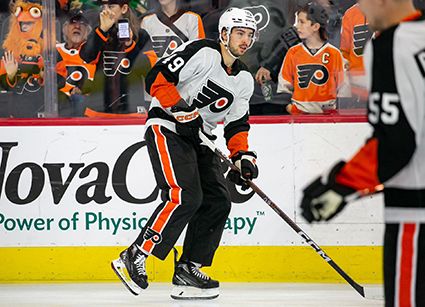

The Flyers shook up the hockey world by bringing back the Cooperalls during warmups on Reverse Retro night
While many scoff at and scorn the Cooperalls, ranking them with other such sports uniform misfits as the 1976 Chicago White Sox shorts, we here at Third String Goalie embrace not only the concept of the Cooperalls, but their look as well. In our opinion, they made the players look taller and sleeker. If football and baseball players can look good in long pants, why not hockey players?
Even the basic idea of long pants for hockey players just makes so much sense to us. Why players would ever wear short pants for a winter sport played on ice, we will never quite understand...
The Cooperalls were first developed in order to increase player safety and protection, as the pads under the Cooperalls were held tightly to the body, unable to shift out of place like the current pads of the day, which would leave the player exposed to injuries, their tailbone in particular.
The original "Cooperalls" worn by the Flyers in 1981-82 were black with an orange stripe trimmed in white which ran down the length of the leg and were actually not Cooperalls, but a CCM version of the Cooperalls called CCM Pro Guard. Philadelphia completed their first season in the long pants with a 38-31-11 record, which was good for 87 points, placing them sixth in the Wales Conference.
The first year 1981-82 "Cooperalls" with the orange stripe down the leg
Cooperalls were also reportedly worn by the Toronto Maple Leafs during the 1981-82 pre-season, but despite a reported game worn pair of actual Cooperalls, not the CCM Pro Guard version, for sale on ebay, no photographic or video evidence of game action to support this claim is readily available.
A supposed pair of Maple Leafs Cooperalls
For the 1982-83 season, the Flyers long pants returned, only this time in solid black, adorned only with a large Flyers logo way down at the ankle of each leg. Philadelphia rose to a 49-23-8 record, good for a Patrick Division title and second overall in the Wales Conference. Unfortunately for the Flyers faithful, they would be eliminated in the first round of the playoffs both seasons while wearing the CCM Pro Guard pants at the hands of the New York Rangers.
The 1982-83 season pants were black with a team logo on the ankle
The Flyers were joined by the Hartford Whalers in wearing "Cooperalls" for the 1982-83 season, with the Whalers version featuring a full-length pair of blue stripes surrounded by three white stripes, which again were actually the CCM version as evidenced by the vertical CCM logo near the bottom of each leg.
The Whalers did the full length pants look no favors with their on-ice performance, as they tied for last in the league with 45 points following a 19-54-7 record.
Following the 1982-83 season the NHL outlawed the long pants on the grounds of player safety, as the outer fabric of the pants was made out of slick material comparable to a nylon windbreaker which was more slippery than the traditional hockey pants/knit socks combination. Any player who fell while wearing them would find themselves skidding relatively unabated into the boards at a much higher speed than previously.
The long pants were outlawed by the NHL on the grounds of safety
Still, it wasn't just the Flyers and Whalers who wore the "Cooperalls", as Canada's junior leagues and high schools in Minnesota also wore them for a period of time.
Brendan Shanahan of the London Knights in his Cooperalls
Brett Hull of the Penticton Vees sporting his Cooperalls
For those of you who think that 1983 was the last of the "Cooperalls" on NHL ice, think again, for it was on Halloween night in 2002 that Jeremy Roenick hilariously took to the ice during warmups for the Flyers upcoming game against the Phoenix Coyotes wearing a blond wig, blacked-out front teeth, striped "Cooperalls" and a #16 Bobby Clarke sweater!
Roenick on Halloween Night in 2002 paying tribute to Bobby Clarke
Perhaps it's now time to revisit the idea of the long pants. We're actually surprised that Reebok didn't taken this one on when they debuted the Reebok Edge jerseys in 2007-08. After all, they were bold enough to reinvent the hockey jersey, so why not change the pants while you are at it? Doing so certainly would have no doubt taken away some of the negative attention the jerseys received at the time.
Additionally, in the last 35 years there certainly have been many innovations and advances in fabric technology to the point that the basic excuse for banning Cooperalls in the first place, the slick fabric, could now easily be addressed by any number of equipment manufacturers.
After all, think of all the other men's sports at the Winter Olympics - alpine and cross-country skiing, bobsled and luge, curling, figure skating, speed skating, ski jumping and snowboarding - and just how many of those winter sports feature competitors wearing short pants? Right. Not one.
Even if the old guard would refuse to allow the return of the late, great Cooperalls full time, there was an opportunity staring them in the face that was seemingly just too good to pass up when the Flyers will play outdoors in the 2017 NHL Stadium Series in February of 2017.
With the Flyers having had so few changes in style of their sweaters over the last 50 years, the one thing that has changed has been their pants, and the time is right for a return to the Cooperalls/CCM PRo Guard long pants of yore. It is, after all, an outdoor game, and wouldn't a nice warm pair of long pants (perhaps lined with some modern high tech Therma Base/Polartec/Thermal Dri-FIT/Play Warm fabric) be just the thing to keep the players warm against winter's chill rather than shorts and socks? Roenick thought so...
Today's featured pants are the 1981-82 Philadelphia Flyers Bill Barber "Cooperalls". Not actually Cooperalls, but CCM Pro Guard pants, they were worn for only a single season. These pants, with their elegant long stripe down the leg, which served to accentuate that the pants were indeed full length, were a shock to the established look when they first appeared.
The stripe on the Flyers pants disappeared for the second season, with just a Flyers logo waaaaay down by the ankle of the otherwise all-black pants. Meanwhile, four hours to the north, the Hartford Whalers also adopted the long pants for one season and went all out to call attention to the full length of their pants with no less than five alternating white and green stripes.
While Philadelphia and Hartford actually both wore the CCM Pro Guard pants, the name "Cooperalls" has become the popular nomenclature for the full length hockey pants in the same way that all brands of tissues are commonly referred to as "Kleenex" while copiers are often referred to as a "Xerox machine" regardless of brand.
Today's video segment begins with spectacular footage from the first ever NHL Cooperalls vs. Cooperalls matchup on December 11, 1982, a 7-4 win for the Whalers over the Flyers. The teams would meet two more times that season, a home and home pair of games on January 8th and 9th 1983, both won by Philadelphia for a grand total of just three all-long pants games in NHL history.
Next, the Flyers wearing their Cooperalls from the first season of use, noted by the orange stripe down the legs.
Next, the Flyers wearing their Cooperalls from the first season of use, noted by the orange stripe down the legs.
Here is a gem, a brief clip of Roenick dressed as Clarke during warmups on Halloween in 2002 with a Clarke jersey, big blonde wig and retro Cooperalls, much to Clarke's amusement.
This next clip from the WHL features Cam Neely of the Portland Winterhawks going toe-to-toe with Shawn Green of the New Westminster Bruins while both were wearing Cooperalls in the 1983-84 season.
This next clip from the WHL features Cam Neely of the Portland Winterhawks going toe-to-toe with Shawn Green of the New Westminster Bruins while both were wearing Cooperalls in the 1983-84 season.
In this next clip from the 1984 Minnesota State High School Hockey Tournament, St. Paul Johnson takes on the Hill-Murray Pioneers during the Cooperall era. Note the clear boards of the old St. Paul Civic Center to complete the obscurity double!
Even French-Canadians and Soviets liked Cooperalls!
Labels:
Cooperalls,
Hartford Whalers,
Philadelphia Flyers
Friday, April 22, 2022
1977-78 Montreal Canadiens Guy Lafleur Jersey
After beginning he career with the Quebec Aces of the Quebec Junior Hockey League in the 1966-67 season with eight games, Guy Lafleur played two more seasons for the Aces, scoring 30 goals and 49 points in 43 games in 1967-68, but really turned heads in 1968-69 with 50 goals and 110 points in 49 games of the 1968-69 season, averaging more than a goal and more than an assist per game.
He then progressed up the ladder to the Quebec Remparts of the Quebec Major Junior Hockey League, where he blossomed with a league leading 103 goals and 170 points in 56 games in 1969-70. Then, in just 15 playoff games, Lafleur scored 43 points from 25 goals and 18 assists.
With Lafleur looking to be a can't miss NHL prospect available in the 1971 NHL Draft, the Montreal Canadiens General Manager Sam Pollock, looking to replace the aging Jean Beliveau, who would play just one more NHL season, fleeced the California Golden Seals by sending them Montreal's first choice in the 1970 draft and Ernie Hicke for not only the Golden Seals first pick in the 1971 draft, but a player, Francois Lacombe, as well.
Lafleur announced his readiness for the NHL with a stellar second season with the Remparts, when he again led the league with an astonishing 130 goals on his way to a 209 points to earn the Jean Beliveau Trophy as the QMJHL scoring champion. Lefleur then duplicated his playoff performance from 1970 when he scored an identical 43 points, only now in one game less than the previous year, 14. The Remparts then advance to the Memorial Cup playoffs, where the prolific Lafleur averaged 2 points per game with 9 goals and 5 assists in 7 games as Quebec won the Memorial Cup.
Hoping the Golden Seals would come through by finishing last, Pollock was alarmed when the Los Angeles Kings began playing quite poorly in 1970-71. In an effort to shore up the Kings, Pollock sent veteran Ralph Backstrom to Los Angeles. The addition of Backstrom ensured that the Kings would avoid the cellar and secured the first pick of Lafleur for Montreal.
With Lafleur safely now a part of the bleu, blanc et rouge, he produced 29 goals and 64 points as an NHL rookie in 73 games in 1971-72. His next two seasons were similar, with 28 goals and 55 points in 1972-73 and a drop in goals to 21 in 1973-74, but an increase in assists saw his point total increase to 56. During the 1973 playoffs, Lafleur contributed 3 goals and 8 points in 17 games as the Canadiens won the first Stanley Cup of his career.
As if someone flipped a switch, Lafleur took his game to another level for the 1974-75 season when he scored the first of his six consecutive 50 or more goal seasons when he scored 53 goals and 66 assists for 119 points to lead the Canadiens in scoring for the first time.
The 1975-76 season saw Lafleur lead not only the Canadiens, but all of the NHL with 56 goals and 69 assists for 125 points for his first Art Ross Trophy. During the Stanley Cup playoffs, Lafleur would score the cup winning goal for Montreal as they defeated the two-time champion Philadelphia Flyers, whose slug it until you win it style could not overcome the speed and skill of the Canadiens. Following the season, Lafleur was voted as the winner of the Pearson Award as the Most Valuable Player by his fellow players.
Before the 1976-77 season began, Lafleur made his international hockey debut as a part of Team Canada that would win the inaugural Canada Cup tournament over Czechoslovakia.
Lafleur would dominate the 1976-77 NHL season when he won his second consecutive Art Ross Trophy with a career high 136 points from 56 goals and 80 assists. He would finish the season a +89 and win not only the Pearson Award, but also his first Hart Trophy as NHL MVP as voted on my the NHL Hockey Writers Association. His 9 goals and 17 assists would lead all players in playoff scoring as the Canadiens would win the 1977 Stanley Cup over the rival Boston Bruins. His efforts would earn Lafleur the Conn Smythe Trophy as playoff MVP. In recognition of his outstanding NHL season, he was the recipient of both the Lionel Conacher Award as Canada's Top Male Athlete and the Lou Marsh Trophy as Canada's Top Athlete.
Still fully on top of his game, the fluid skating right winger continued to dominate the NHL in 1977-78. He set a career high by hitting the 60 goal plateau and added 72 assists for 132 points to claim his third consecutive Art Ross Trophy as the NHL's leading scorer. He would also win his second consecutive Hart Trophy and third straight Pearson Award as league MVP. The Canadiens, led by Lafleur's 21 points in 15 games, would defeat the Bruins again for their third straight Stanley Cup, the fourth of Lafleur's career.
Despite a 52 goal, 129 point season, Lafleur would finally have to relinquish his standing at the NHL's top scorer, finishing third behind Bryan Trottier (134) and Marcel Dionne (130). Al l was not lost, however, as the Canadiens would capture their fourth consecutive Stanley Cup and 5th for Lafleur, when they defeated the New York Rangers as Lafleur led the team in scoring with 23 playoff points.
During the 1978-79 season, Lafleur was also named as a member of the NHL All-Star team that took part in the 1979 Challenge Cup, a three game series against the Soviet Union that took the place of the traditional NHL All-Star Game that season.
Lafleur's sixth and final 50 goal season came in 1979-80 when he led the Canadiens for the sixth consecutive season with 125 points, which was again good for third in the league behind NHL newcomer Wayne Gretzky and Marcel Dionne, who tied with 137 points. His feat made him the first player to ever have six consecutive 50 goal, 100 point seasons in league history.
Age and injuries would begin to take their toll on Lafleur beginning with the 1980-81 season, as he was limited to 51 games, never having played less than 70 during his previous nine NHL seasons. He did score his 1,000th point on March 4, 1981, setting a then NHL record for the fastest player to 1,000 points, having done so in just 720 games.
In 1981-82 he saw action in 66 games followed by 68 in 1982-83. During each of those shortened campaigns, Lafleur scored an identical 27 goals, with 84 points in 1981-82 being his best. In 1982-83, Montreal was a shadow of it's former self, and Lafleur's 76 points were enough to lead the team in scoring for the seventh time.
During that time period, Lafleur competed in his only World Championships for Canada in 1981, scoring a goal in 7 games as well as taking part in his second Canada Cup later that fall as the Canadians finished as runner up to the Soviets despite Lafleur scoring 11 points in 7 games.
He played in all 80 of Montreal's games in 1983-84, scoring 30 goals and 70 points as the Canadiens team leader once more. Mind you, Gretzky led the league with 205 that season... After three consecutive first round postseason exits, the Canadiens did go on a nice run, making it to the third round of the playoffs, but Lafleur only contributed 3 assists in 12 of Montreal's 15 games.
His final season with Montreal saw him play just 19 games, scoring just 2 goals and 5 points, before he decided to retire. In front of 18,000 fans, he took one last skate around the ice and received a five minute standing ovation. "After 13 years, I couldn't accept to be number two. I'm proud of what I did in the past and I'm proud I played for the Canadiens, especially on five Stanley Cup winners. I was in a slump and I wasn't scoring much a the time. I was frustrated," Lafleur recalled about his decision to retire.
Lafleur became the sixth Canadien to have his number retired and was inducted into the Hockey Hall of Fame on 1988.
However... he still believed he could play after three seasons away from the game and signed to play with the New York Rangers for the 1988-89 season. He played in 67 games for New York before being sidelined by a knee injury, becoming only the second player after Gordie Howe to play after being inducted into the Hockey Hall of Fame. He totaled 18 goals and 45 points, including scoring twice during his first game back in the Montreal Forum against Patrick Roy as the fans chanted his name every time he touched the puck just as they had during the peak of his career as a Canadien.
Rangers head coach, and Lafleur's close friend Michel Bergeron was dismissed and joined the Quebec Nordiques, who also signed Lafleur for the 1989-90 season, who stood out on the ice, as he was allowed to play without a helmet, while all new players into the league were now required to wear one since the 1979-80 season. Lafleur reportedly turned down a more lucrative offer from the Los Angeles Kings, preferring to play in his native Quebec.
During his two seasons with the Nordiques, Lafleur played in 39 games his first season, scoring 12 goals and 34 points, followed by 59 games in 1990-91, again scoring 12 goals on his way to 28 points before he retired again, this time for good.
His final NHL totals were 560 goals and 793 assists for 1,353 points in 1,126 games with an additional 58 goals and 134 points in 128 playoff games. He won five Stanley Cups, 3 scoring titles, 2 Hart Trophies and 3 Pearson Awards as MVP, a Conn Smythe Trophy and a Canada Cup. Lafleur also played in the NHL All-Star Game in 1975, 1976, 1977, 1978, 1980 and 1991 as well as being on the Challenge Cup team in 1979. He is the Canadiens all-time scoring leader and holds the club single season scoring record with 136.
Today's featured jersey is a 1977-78 Montreal Canadiens Guy Lafleur jersey as worn during his career year when he set a personal best and Canadiens team record of 136 points on his way to winning the Art Ross Trophy, the Hart Trophy and the Pearson Award as well as the Stanley Cup.
Bonus jersey: Today's bonus jersey is a 1971-72 Montreal Canadiens Guy Lafleur jersey as worn during Lafleur's rookie season in the NHL.
The Canadiens red sweaters with the blue band around the chest date back to before the formation of the NHL in 1917 and this exact variation with the lace up collar and numbers inside the arms stripes dates back to 1966-67 and remained in use through 1974-75 when it was replaced by a new v-neck collar.
Extra bonus jersey: Today's extra bonus jersey is a 1990-91 Quebec Nordiques Guy Lafleur jersey as worn during his final season in the NHL, his second in Quebec.
Today's video section is the always excellent Legends of Hockey series profile of Lafleur.
He then progressed up the ladder to the Quebec Remparts of the Quebec Major Junior Hockey League, where he blossomed with a league leading 103 goals and 170 points in 56 games in 1969-70. Then, in just 15 playoff games, Lafleur scored 43 points from 25 goals and 18 assists.
With Lafleur looking to be a can't miss NHL prospect available in the 1971 NHL Draft, the Montreal Canadiens General Manager Sam Pollock, looking to replace the aging Jean Beliveau, who would play just one more NHL season, fleeced the California Golden Seals by sending them Montreal's first choice in the 1970 draft and Ernie Hicke for not only the Golden Seals first pick in the 1971 draft, but a player, Francois Lacombe, as well.
Lafleur announced his readiness for the NHL with a stellar second season with the Remparts, when he again led the league with an astonishing 130 goals on his way to a 209 points to earn the Jean Beliveau Trophy as the QMJHL scoring champion. Lefleur then duplicated his playoff performance from 1970 when he scored an identical 43 points, only now in one game less than the previous year, 14. The Remparts then advance to the Memorial Cup playoffs, where the prolific Lafleur averaged 2 points per game with 9 goals and 5 assists in 7 games as Quebec won the Memorial Cup.
Lafleur celebrates winning the 1971 Memorial Cup
Hoping the Golden Seals would come through by finishing last, Pollock was alarmed when the Los Angeles Kings began playing quite poorly in 1970-71. In an effort to shore up the Kings, Pollock sent veteran Ralph Backstrom to Los Angeles. The addition of Backstrom ensured that the Kings would avoid the cellar and secured the first pick of Lafleur for Montreal.
With Lafleur safely now a part of the bleu, blanc et rouge, he produced 29 goals and 64 points as an NHL rookie in 73 games in 1971-72. His next two seasons were similar, with 28 goals and 55 points in 1972-73 and a drop in goals to 21 in 1973-74, but an increase in assists saw his point total increase to 56. During the 1973 playoffs, Lafleur contributed 3 goals and 8 points in 17 games as the Canadiens won the first Stanley Cup of his career.
As if someone flipped a switch, Lafleur took his game to another level for the 1974-75 season when he scored the first of his six consecutive 50 or more goal seasons when he scored 53 goals and 66 assists for 119 points to lead the Canadiens in scoring for the first time.
The 1975-76 season saw Lafleur lead not only the Canadiens, but all of the NHL with 56 goals and 69 assists for 125 points for his first Art Ross Trophy. During the Stanley Cup playoffs, Lafleur would score the cup winning goal for Montreal as they defeated the two-time champion Philadelphia Flyers, whose slug it until you win it style could not overcome the speed and skill of the Canadiens. Following the season, Lafleur was voted as the winner of the Pearson Award as the Most Valuable Player by his fellow players.
Before the 1976-77 season began, Lafleur made his international hockey debut as a part of Team Canada that would win the inaugural Canada Cup tournament over Czechoslovakia.
Lafleur won the Canada Cup in 1976 against the Czechs
Lafleur would dominate the 1976-77 NHL season when he won his second consecutive Art Ross Trophy with a career high 136 points from 56 goals and 80 assists. He would finish the season a +89 and win not only the Pearson Award, but also his first Hart Trophy as NHL MVP as voted on my the NHL Hockey Writers Association. His 9 goals and 17 assists would lead all players in playoff scoring as the Canadiens would win the 1977 Stanley Cup over the rival Boston Bruins. His efforts would earn Lafleur the Conn Smythe Trophy as playoff MVP. In recognition of his outstanding NHL season, he was the recipient of both the Lionel Conacher Award as Canada's Top Male Athlete and the Lou Marsh Trophy as Canada's Top Athlete.
Still fully on top of his game, the fluid skating right winger continued to dominate the NHL in 1977-78. He set a career high by hitting the 60 goal plateau and added 72 assists for 132 points to claim his third consecutive Art Ross Trophy as the NHL's leading scorer. He would also win his second consecutive Hart Trophy and third straight Pearson Award as league MVP. The Canadiens, led by Lafleur's 21 points in 15 games, would defeat the Bruins again for their third straight Stanley Cup, the fourth of Lafleur's career.
Yvon Lambert, Yvan Cournoyer and Guy Lafleur
hoisting the Stanley Cup in 1978
During the 1978-79 season, Lafleur was also named as a member of the NHL All-Star team that took part in the 1979 Challenge Cup, a three game series against the Soviet Union that took the place of the traditional NHL All-Star Game that season.
Lafleur's sixth and final 50 goal season came in 1979-80 when he led the Canadiens for the sixth consecutive season with 125 points, which was again good for third in the league behind NHL newcomer Wayne Gretzky and Marcel Dionne, who tied with 137 points. His feat made him the first player to ever have six consecutive 50 goal, 100 point seasons in league history.
Age and injuries would begin to take their toll on Lafleur beginning with the 1980-81 season, as he was limited to 51 games, never having played less than 70 during his previous nine NHL seasons. He did score his 1,000th point on March 4, 1981, setting a then NHL record for the fastest player to 1,000 points, having done so in just 720 games.
Lafleur acknowledging the fans after scoring his 1000th point
In 1981-82 he saw action in 66 games followed by 68 in 1982-83. During each of those shortened campaigns, Lafleur scored an identical 27 goals, with 84 points in 1981-82 being his best. In 1982-83, Montreal was a shadow of it's former self, and Lafleur's 76 points were enough to lead the team in scoring for the seventh time.
During that time period, Lafleur competed in his only World Championships for Canada in 1981, scoring a goal in 7 games as well as taking part in his second Canada Cup later that fall as the Canadians finished as runner up to the Soviets despite Lafleur scoring 11 points in 7 games.
Wayne Gretzky and Guy Lafleur chatting during the 1981 Canada Cup
He played in all 80 of Montreal's games in 1983-84, scoring 30 goals and 70 points as the Canadiens team leader once more. Mind you, Gretzky led the league with 205 that season... After three consecutive first round postseason exits, the Canadiens did go on a nice run, making it to the third round of the playoffs, but Lafleur only contributed 3 assists in 12 of Montreal's 15 games.
His final season with Montreal saw him play just 19 games, scoring just 2 goals and 5 points, before he decided to retire. In front of 18,000 fans, he took one last skate around the ice and received a five minute standing ovation. "After 13 years, I couldn't accept to be number two. I'm proud of what I did in the past and I'm proud I played for the Canadiens, especially on five Stanley Cup winners. I was in a slump and I wasn't scoring much a the time. I was frustrated," Lafleur recalled about his decision to retire.
Lafleur became the sixth Canadien to have his number retired and was inducted into the Hockey Hall of Fame on 1988.
the Hockey Hall of Fame in 1988
However... he still believed he could play after three seasons away from the game and signed to play with the New York Rangers for the 1988-89 season. He played in 67 games for New York before being sidelined by a knee injury, becoming only the second player after Gordie Howe to play after being inducted into the Hockey Hall of Fame. He totaled 18 goals and 45 points, including scoring twice during his first game back in the Montreal Forum against Patrick Roy as the fans chanted his name every time he touched the puck just as they had during the peak of his career as a Canadien.
Lafleur waves to his fans in Montreal after being named
the game's #1 Star on his return to the forum with the Rangers
Rangers head coach, and Lafleur's close friend Michel Bergeron was dismissed and joined the Quebec Nordiques, who also signed Lafleur for the 1989-90 season, who stood out on the ice, as he was allowed to play without a helmet, while all new players into the league were now required to wear one since the 1979-80 season. Lafleur reportedly turned down a more lucrative offer from the Los Angeles Kings, preferring to play in his native Quebec.
During his two seasons with the Nordiques, Lafleur played in 39 games his first season, scoring 12 goals and 34 points, followed by 59 games in 1990-91, again scoring 12 goals on his way to 28 points before he retired again, this time for good.
His final NHL totals were 560 goals and 793 assists for 1,353 points in 1,126 games with an additional 58 goals and 134 points in 128 playoff games. He won five Stanley Cups, 3 scoring titles, 2 Hart Trophies and 3 Pearson Awards as MVP, a Conn Smythe Trophy and a Canada Cup. Lafleur also played in the NHL All-Star Game in 1975, 1976, 1977, 1978, 1980 and 1991 as well as being on the Challenge Cup team in 1979. He is the Canadiens all-time scoring leader and holds the club single season scoring record with 136.
Today's featured jersey is a 1977-78 Montreal Canadiens Guy Lafleur jersey as worn during his career year when he set a personal best and Canadiens team record of 136 points on his way to winning the Art Ross Trophy, the Hart Trophy and the Pearson Award as well as the Stanley Cup.
This
style jersey dates back to 1941 and, aside from a version with a blue
stripe around the chest for three years in the late 40's, has remained
essentially unchanged ever since.
Bonus jersey: Today's bonus jersey is a 1971-72 Montreal Canadiens Guy Lafleur jersey as worn during Lafleur's rookie season in the NHL.
The Canadiens red sweaters with the blue band around the chest date back to before the formation of the NHL in 1917 and this exact variation with the lace up collar and numbers inside the arms stripes dates back to 1966-67 and remained in use through 1974-75 when it was replaced by a new v-neck collar.
photo courtesy of Classic Auctions
Extra bonus jersey: Today's extra bonus jersey is a 1990-91 Quebec Nordiques Guy Lafleur jersey as worn during his final season in the NHL, his second in Quebec.
Today's video section is the always excellent Legends of Hockey series profile of Lafleur.
Subscribe to:
Comments (Atom)
